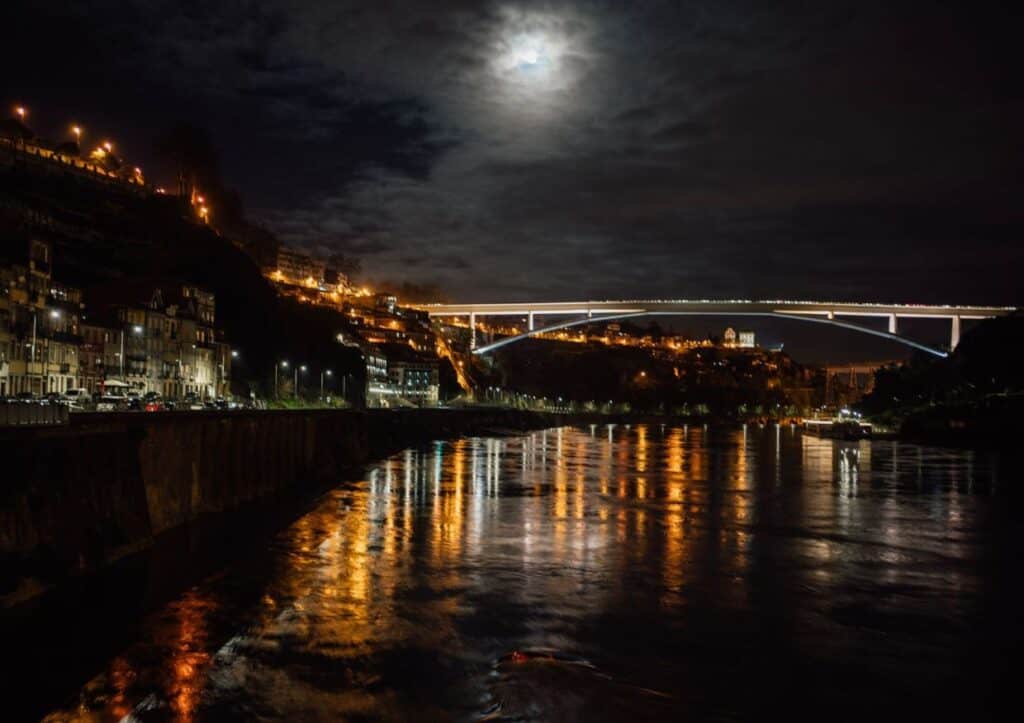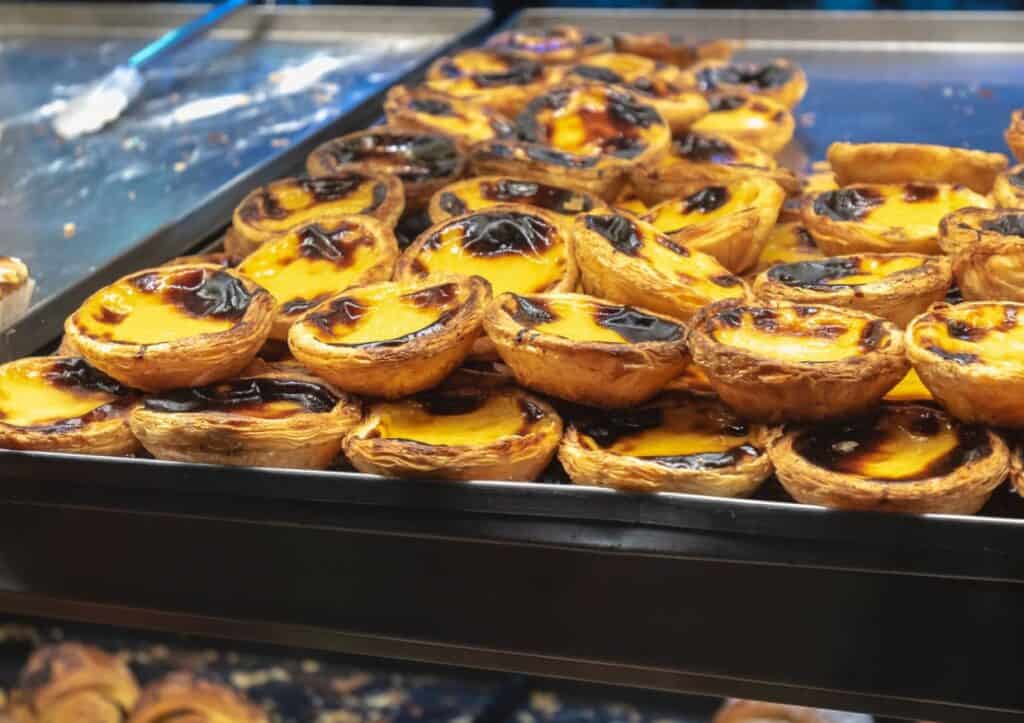Embark on a captivating voyage through Portugal’s wine heartland, the Douro Valley. Discover the cultural and historical significance of this remarkable Douro River and immerse yourself in the country’s wine heritage, all while exploring charming villages and tasting exceptional wines.

The Douro River meets the Atlantic Ocean, where the cities of Porto and Vila Nova de Gaia overlook one another with breathtaking sunsets, Port houses, bustling shops, arts, culture and music. But Porto is more than just an inexpensive place for a holiday; at the endpoint of the Douro River, it’s the perfect starting place for an adventure into Portugal’s history through wine.
The significance of the Douro River
Winding from the Sierra de Urbión mountain range, in Spain, through northern Portugal, ending in the Atlantic Ocean, the Douro River is 557 miles long and has carved its path through rich lands where ancient cities have cultivated wine for centuries. The unique soil, climate and topography of the Douro Valley are well suited for vine cultivation, where terraces are carved into the sweeping hillsides carved down into the river basin.
Not just an ideal trade route, the river was the perfect agricultural region for winemaking for centuries. And in the 18th century, the region’s unique sweet dessert wine, Port, became a favorite of the English and evolved into an important trade commodity shipped along the waters in the iconic wooden boats known as “rabelos” along the Douro River. Soak in all the history and bring it to your next wine tasting in Napa.

Wind through Portugal’s wine history
The breathtaking beauty of the Douro Valley is UNESCO-recognized, designated a World Heritage site since 2001, and celebrated for its remarkable terraced vineyards, winemaking traditions and natural beauty.
A river cruise along the Douro River is the perfect opportunity to immerse yourself in Portugal’s wine heritage. Unlike other river cruises, all the sailing takes place along the Douro during the daytime as the water is too shallow and rocky to navigate at night. As you sail through breathtaking landscapes of vineyards and charming villages, you’ll discover the importance of the Douro Valley as a renowned wine-growing region.
“Port wine is a fortified wine produced exclusively in the Douro Valley region of Portugal. The first time I tasted it was in Porto. I fell in love with it because of its sweetness and richness. Port wine is often served as a dessert wine. I always have a bottle at home since I live in Portugal and love to serve it with chocolate or desserts, or simply enjoyed alone as a digestive, especially in winter.”
— Angela Pagliarello, The Bella Vita
Disembark the ship at every port and explore the vineyards, wineries and “quintas” or estates along the way. Grab your wine glasses and taste Port wine and the region’s medley of wine varieties, reds, whites, rosés and sparkling whites. And although technically not from the Douro Valley, try a Vinho Verde from the Vinho Verde region in northwest Portugal for a genuinely memorable wine to taste while exploring the region.

Explore Portugal’s culture
Starting with the baroque streets of Porto, sailing along the Douro River on a river cruise offers chances to explore the Guimaraes’ castle ruins and take a guided tour through historical locations through the city and over one of the six famed bridges. Sail along the illuminated river at night below the historic Maria Pia Bridge, built by Gustave Eiffel, predating the Eiffel Tower by a decade.
Spend your time learning about regional folk stories and evenings listening to the soulful sounds of fado, the Portuguese equivalent of blues. As the ship stops in the beautiful cities of Regua, explore local areas and further up the river, hike through the rolling green landscapes of Douro National Park and take the opportunity to pop into the neighboring country of Spain for a brief history of flamenco dancing.
Taste the regional flavors like the custard tart “pastel de nata,” “alheira,” a unique smoky sausage, the robust variety of salted cod dishes and grilled sardines as you sail through the Douro Valley. Not only are the dishes regional, but they are symbolic of the hard-working, resourceful culture and a great way to learn the history of the Portuguese people.

“For years I had overlooked Portuguese wine until a sommelier made me taste it, and it was one of those ‘oh my goodness’ moments! One of my favorite red wines is Lobo e Falcao; it’s an affordable red wine made on a 17th-century estate. It’s a blend of Syrah and Portuguese grapes, and it’s superb, bursting with red berry flavor with a full, rich body.”
— Mandy Applegate, Splash of Taste
Tips for cruising the Douro River
When booking a river cruise along the Douro River, here are a few tips and pointers for a fantastic experience.
- Book in the spring or fall season for the best weather. The spring season will show beautiful lush green landscapes if the weather has been good, but minimal vines, as it’s early in the season. Fall has the stunning colors of autumn, blanketing the Douro Valley.
- Look for a river cruise that caters to your interest. Consider hiking, cultural or gastronomy when reviewing the offered itineraries. Remember that river cruising is slow, giving you lots of time to enjoy reading a good book on the deck while looking out into the rolling vineyard views.
- Make the most of the historical landmarks. Wear comfortable shoes and visit the Ribeira district in Porto, a UNESCO World Heritage Site filled with historic buildings, narrow streets and the iconic Dom Luís I Bridge. Visit the ancient castles, the awe-inspiring university and the Old and New Cathedral in Salamanca, Spain, for a master class in Gothic and Baroque architecture.
- Look at a calendar for events and plan a trip around them to get an immersive experience. The Douro Valley hosts various wine festivals, such as the Wine Festival in Pinhao, where visitors can enjoy wine tastings, traditional food, music and dancing. There are festivals like the Harvest Festival, celebrating the region’s agricultural traditions and the Wine and Grape Festival, which showcases local products and cultural performances. Also, look for significant country holidays like Freedom Day on April 25th. These events provide an opportunity to engage with the local community, experience traditional customs and celebrate the region’s cultural heritage.
- When in Porto, be sure to cross one of the many bridges and learn the history of winemaking in one of the many Port houses in the city of Gaia. Go on one of the offered guided tours or book a personal day tour highlighting Port’s history and other regional wines. Wine tastings with short educational sessions are often included, allowing you to sample different wines and better understand the characteristics that make this region so extraordinary.
Immerse yourself in Portugal’s fascinating culture as you embark on a Douro River cruise, where scenic beauty, rich history and exquisite wines intertwine. It’s a memorable way to experience the Douro River’s cultural and historical significance, indulge in Portuguese cuisine’s flavors, and uncover the traditions that have shaped this remarkable region at a slow pace. Be enchanted by the Douro River with lasting memories of a beautiful place.